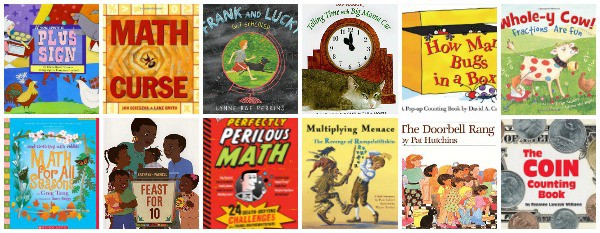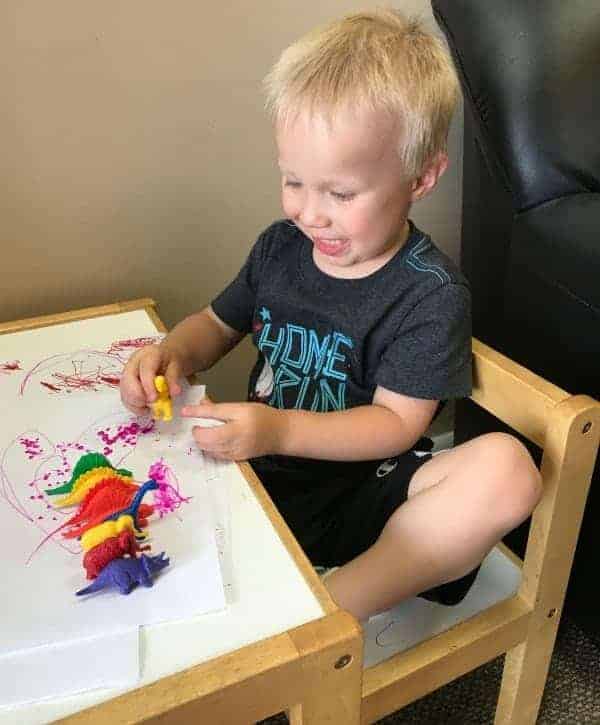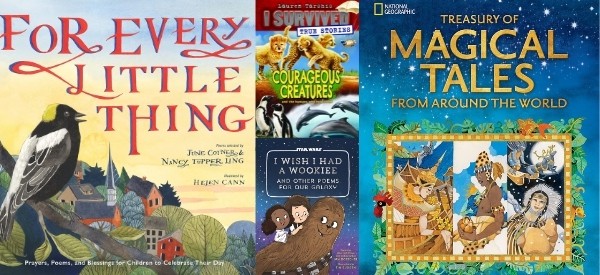Teaching Children How To Tell Time
This post may contain affiliate links.
Do you have an analog clock in your home or classroom? Are you teaching children how to tell time with it? Not everyone does anymore…but it’s very important to teach this life skill.
We have an analog clock in our house for learning purposes, but I admit that I never use it otherwise. I use my phone or the clock on the stove when I need the time. Even with digital clocks being more popular these days, teaching children how to tell time on an analog clock will never go out of style. It’s also a great way to help bolster math skills!
In addition to math, knowing about time and how it works is an important part of daily life. Knowing about time can help with transitions, getting ready, and anticipating what will come next. Digital or analog, telling time is an important life skill!
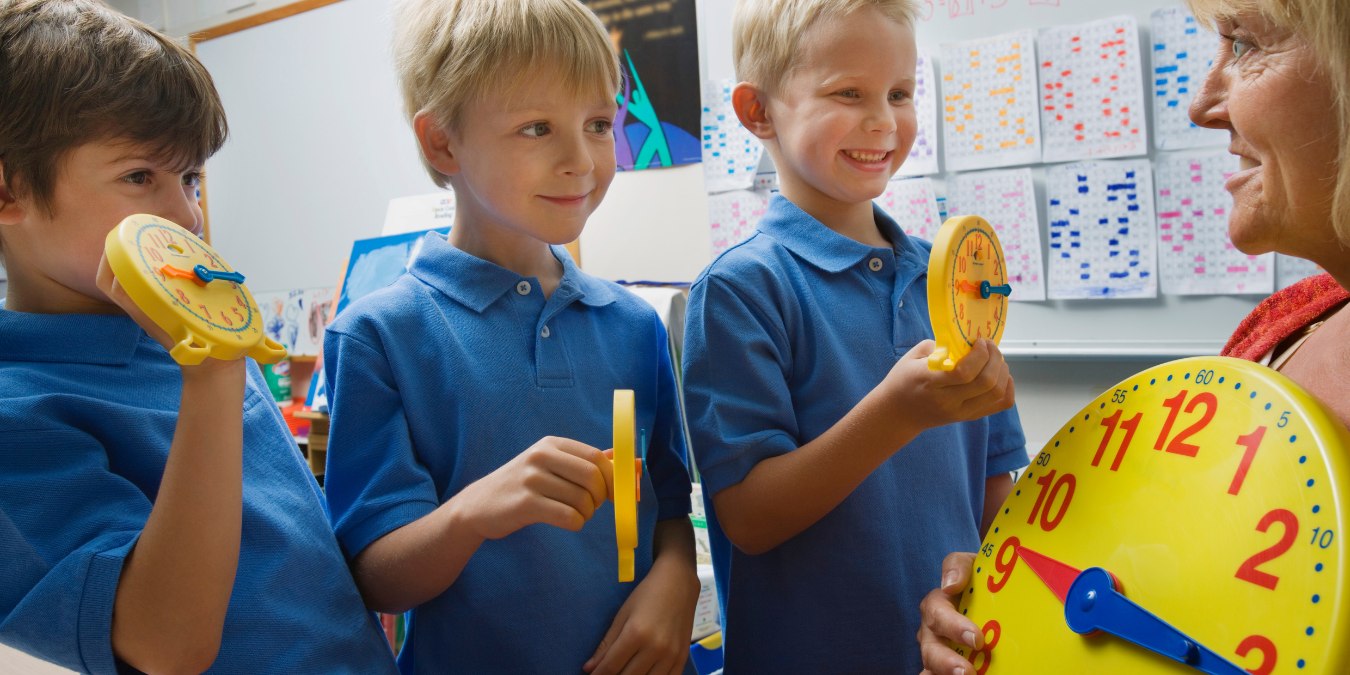
Tips for Teaching How to Tell Time
Here are some quick tips on teaching children to tell time:
Count By Fives (and tens!)
Knowing the “five times table” is very helpful with an analog clock. But learning to count by fives and tens is a necessary math skill that can start as young as four or five. It’s also a great way to segment time for children. Once they understand smaller units of time, like five minutes, it can give them a better sense of how long things take.
Know When to Teach Telling Time
Some teachers start teaching time-telling in kindergarten. Some don’t start until second grade. Just start when your child is ready. How will you know? They will show a keen interest in time and in numbers through counting and segmenting. They will also recognize number shapes easily.
Clock Parts
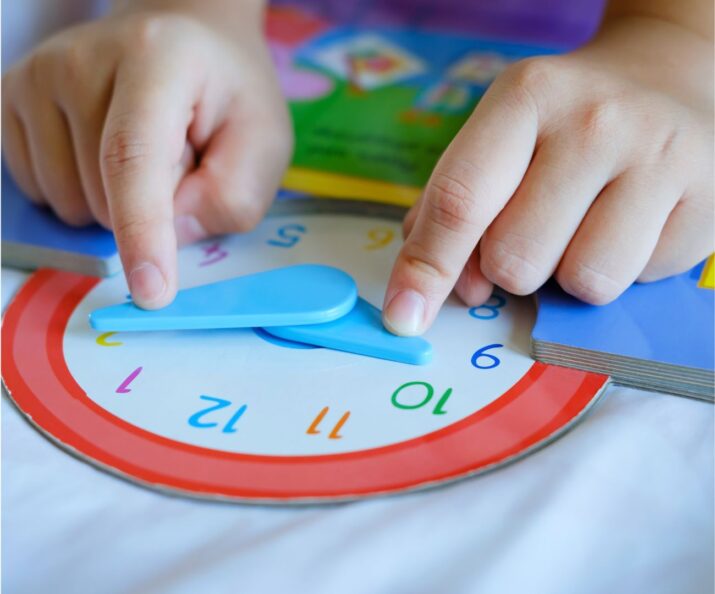
Make sure to teach all the parts of the clock! The minute hand, the hour hand, the second hand, the minute lines, and the face are all important words and parts of a clock.
Teach Time Words
Don’t forget to introduce time phrases or time vocabulary words. O’clock. Half-past. A quarter to. These kinds of phrases can be added in as you are teaching children to tell time. I usually save some until they are fluently telling time and are becoming more well-versed in math terms.
Post a Schedule With Start Times
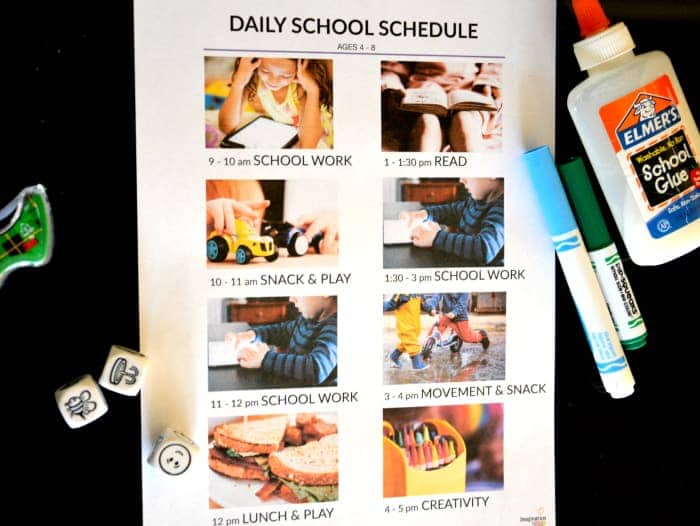
Keep an analog clock by the door or in their bedroom. Couple it with a schedule that lists all of the times you need to do things, like leave for school or get ready for bed. Make sure you have analog clock pictures and the time written in numbers on the schedule. It will give them lots of opportunities to check the time!
Teach AM and PM
Make sure to cover AM and PM with them. AM is “Ante Meridiem” or “Before Noon.” PM Is–you guessed it–Post Meridiem or “After Noon.” You can get into time zones later! This is important because it can give children a better sense of how the day is segmented and when things will actually happen.
Use An Analog-Clock Timer
Timers get children more acquainted with the passage of time and what that means. I use them at home and in the classroom to help support children with time management and turn-taking. Analog-based timers are a great way to build those skills, and get better at understanding the concept of time.
Make It Fun
As always, make it fun! Kids learn best with games, songs, and engagement. Don’t we all, really? Hands-on activities and tools will make it easier. There are lots of fun videos on YouTube that can help you teach children how to tell time.
Telling Time Games
Once you get started teaching children how to tell time, here are some fun games and activities to keep it going:
What Time Is It, Mr. Fox?
A popular playground game that you can add a little analog to. Have the fox hold a large clock, like the classic one pictured below. One child moves the clock hands. Then, the other children need to figure out what time it is. Be aware when the fox calls out lunchtime!
Time Bots
Build robots from tin cans and loose parts. (Or just draw robots on paper, it’s still fun!) Add clocks to their bodies, both digital and analog, using paper and magnet strips. It’s a Five O’clock Bot! Or a Midnight Bot!
Paper Clock Headbands
Make headbands out of construction paper. Staple or glue paper clocks to them with working hands. Have children change the times on their headbands according to what time it is, what time the next activity starts, or another prompt. You can also have them change and tell the time on each other’s headbands.
Teaching Tools
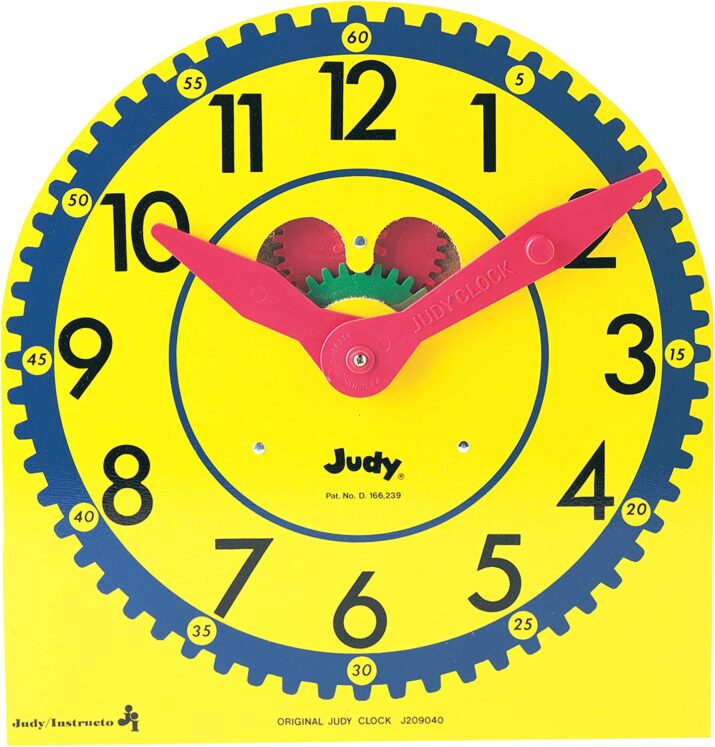
The Classic Judy clock shown above is always a fun one to use. Learning Resources also offers fun mini clocks and time-telling games. Rubber stamps are also a hit when teaching time-telling skills, and are so versatile too! Use them for anything from making games and activities to illustrating schedules.
Time Match
Have a stack of pictures with a digital time. These can be a digital time or an activity with a digital time. (For example, a picture of someone eating breakfast with 8:00 am written underneath.) Use mini clocks (or clock drawings) and match them up to pictures.
Time Books
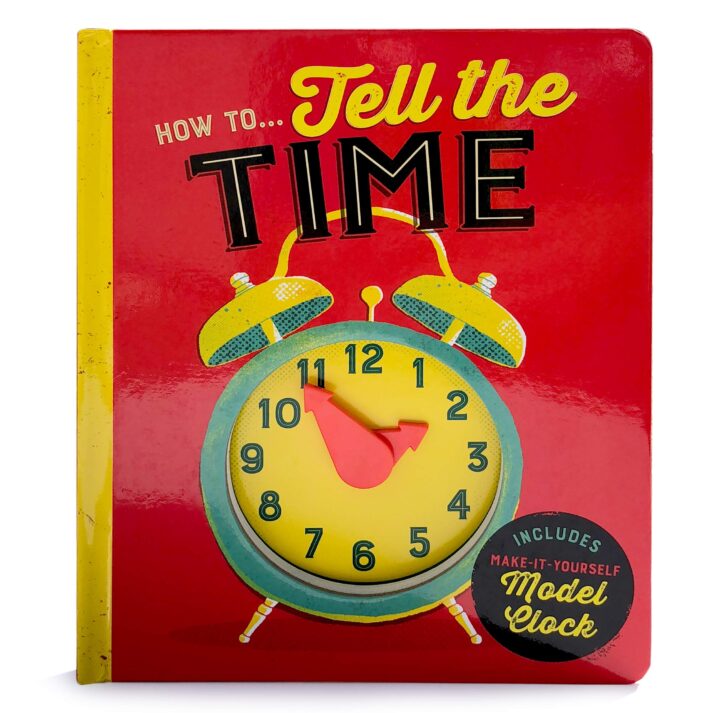
There are lots of books that help teach children how to tell time. One great choice is How To Tell Time by Cottage Door Press and Shahar Kober. It takes you through Ollie the Owl’s day and includes a mini clock.
Dry-Erase Clocks
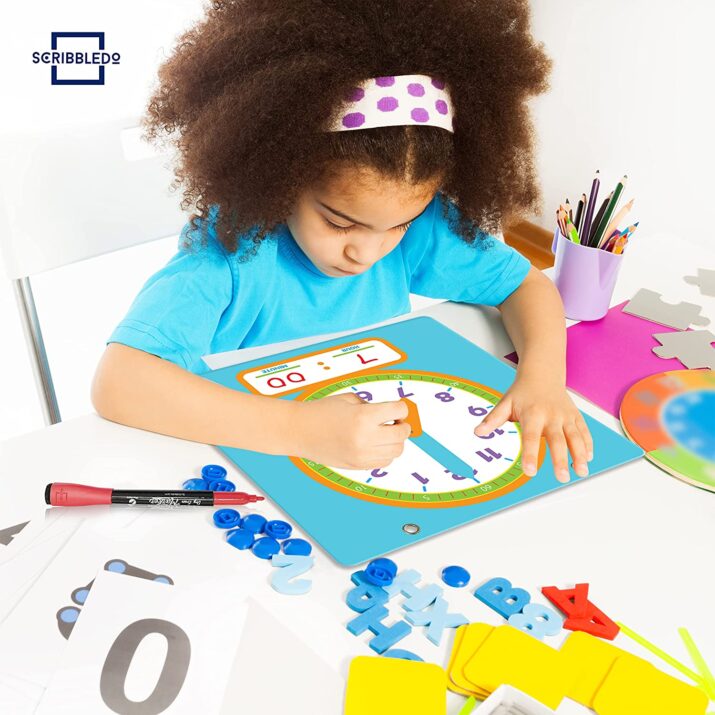
The dry erase clocks are fun and reusable! Children can change the time for each new activity during the day or just to practice. The large one from Scribbledo is easy to use and understand. It also includes a spot to write the time underneath the clock face so you get analog and digital!
Tic-CLOCK-Toe
Set up a tic-tac-toe board and put an empty clock in each square. (Those rubber stamps come in handy here!) Have children play tic-tac-toe, but by adding hands to the clock. Can they get a row showing all the same times?
When you start teaching children how to tell time, will you start with an analog or digital clock? Either way, make sure they are ready, interested, and know their number symbols before you begin. That way, it will be a lot easier for them to master. It’s also okay if it takes a long time for them to catch on! Some schools teach time-telling over a few years. Have fun, and let time tick on!
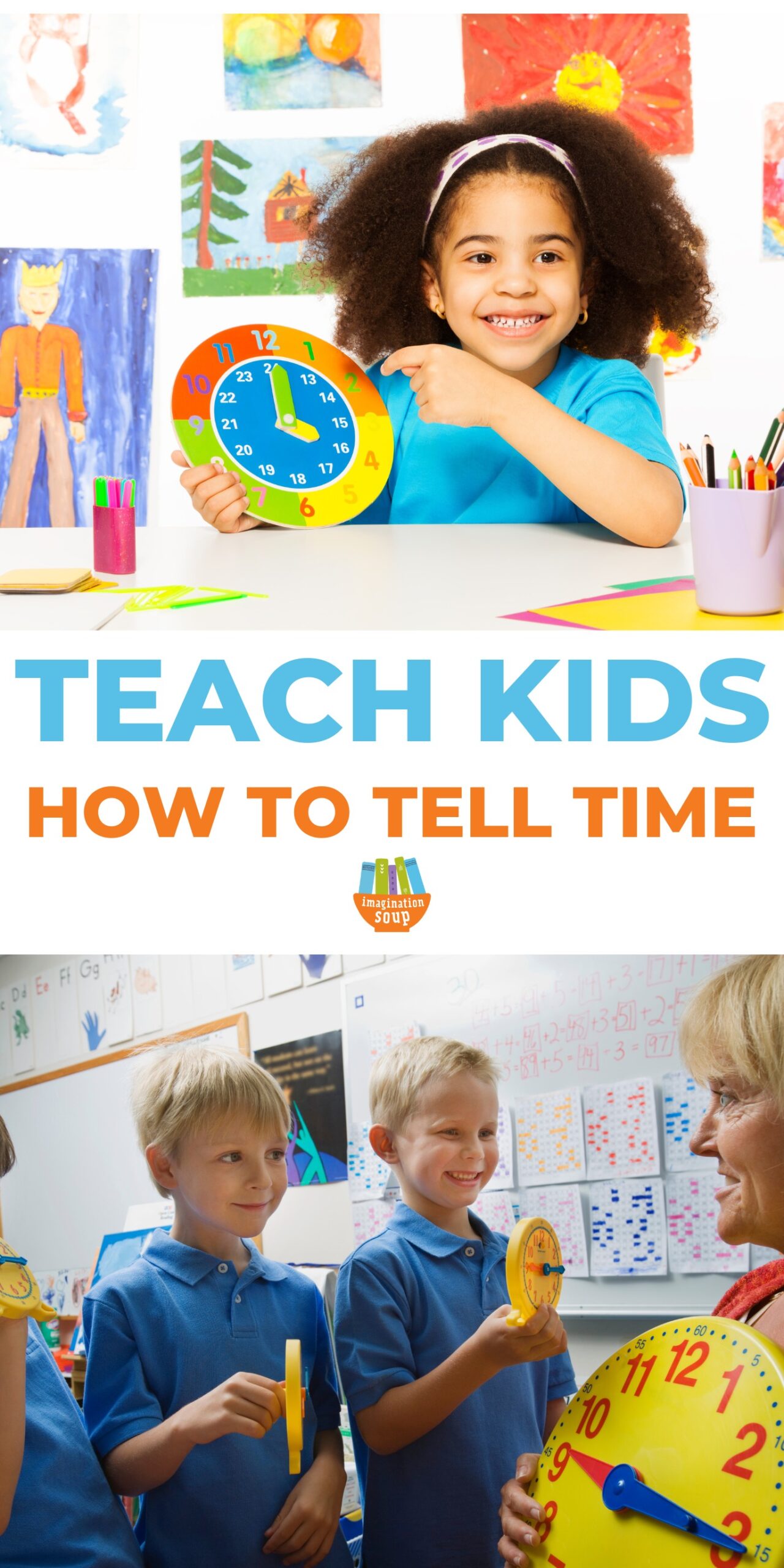
KEEP READING


